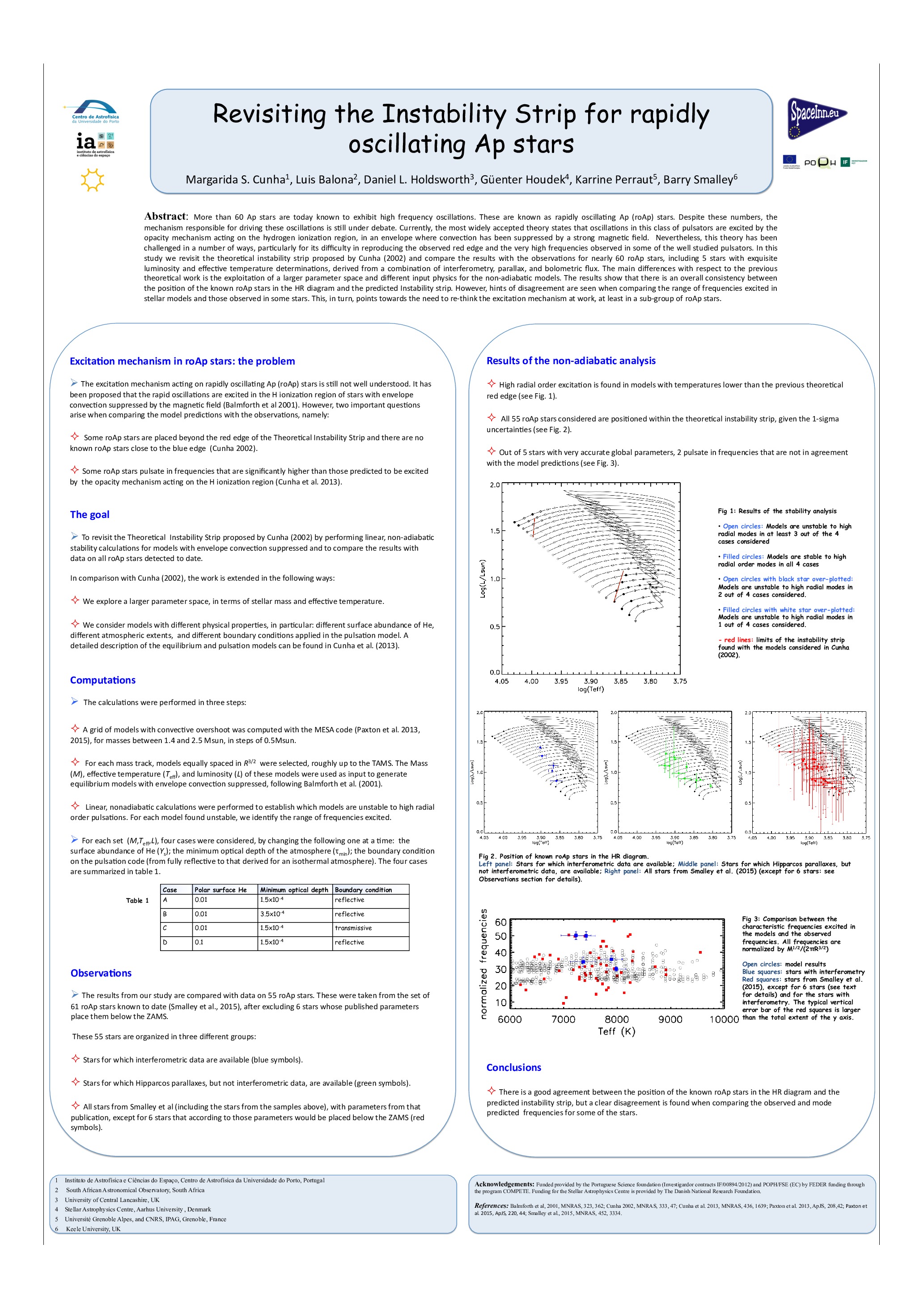Affiliation
Instituto de Astrofísica e Ciências do Espaço
Main category
Natural Sciences (Astrophysics and Astrononmy)
Abstract
Chemically peculiar stars are stage to a wide variety of physical phenomena. Progress in the understanding of these objects, through the study of their oscillations, can help us characterize these physical phenomena and better understand the way they are coupled in stars. More than 60 Ap stars are today known to exhibit high frequency oscillations. Despite this, the mechanism responsible for driving these oscillations is still under debate. Currently, the most widely accepted theory states that oscillations in this class of pulsators are excited by the opacity mechanism acting on the hydrogen ionization region, in an envelope where convection has been suppressed by a strong magnetic field. Nevertheless, this theory has been challenged in a number of ways, particularly for its difficulty in reproducing the observed red edge and the very high frequencies observed in some of the well studied pulsators. In this study we revisit the theoretical instability strip proposed by Cunha (2002) and compare the results with the observations for over 60 roAp stars, including 5 stars with exquisite luminosity and effective temperature determinations, derived from a combination of interferometry, parallax, and bolometric flux. The main differences with respect to the previous theoretical work is the exploitation of a larger parameter space and different input physics for the non-adiabatic models. The results show that there is an overall consistency between the position of the known roAp stars in the HR diagram and the predicted Instability strip. However, hints of disagreement are seen when comparing the range of frequencies excited in stellar models and those observed in some stars. This, in turn, points towards the need to re-think the excitation mechanism at work, at least in a sub-group of roAp stars.
Do you have problems viewing the pdf-file? Download poster
here
If the poster contains inappropriate content, please
report the poster. You will be redirected to the landing page.
